As our university continues to attract students from around the world, many newcomers will find themselves navigating Tokyo’s intricate public transportation system for the first time. This blog post aims to provide practical guidance and insider tips to help them navigate Tokyo’s trains, subways, and buses with confidence.
1. Personal Experience
When I first used Tokyo’s vast railway system, I found the process of transferring between JR lines and subway lines confusing. The lack of seamless integration between the two networks often left me scrambling to figure out where to go next. However, one key discovery made my journey much easier: understanding the symbols used on station signage.
A square symbol typically represents JR (Japan Railways) lines, while a circular symbol denotes Tokyo Metro Lines. At first, I overlooked this subtle difference and ended up on the wrong platform more than once. Once I noticed this system, it became a game changer for finding the correct track or exit, especially at complex stations like Shinjuku or Tokyo Station.
Another thing that truly shocked me was the number of people on the trains during peak hours. I remember squeezing into a packed carriage, surrounded by a sea of commuters, with barely enough room to move. The rush hour crush is something I will never forget; it felt as though the entire city was trying to get somewhere at the same time. If I had a choice, I would definitely avoid travelling during peak time and stick to quieter hours.

Note: There are 8 major private railways companies in Kanto region, each with a different color symbol, circular or square.
2. Planning Your Routes: Comparing Navigation Tools
When it comes to planning your routes in Tokyo, having the right navigation tool can make all the difference. Let’s delve deeper into the strengths of each option:
Google Maps:
This widely used navigation app is renowned for its user-friendly interface and comprehensive coverage. With Google Maps, you can simply input your destination, and the app will automatically generate the most efficient route, including which train stations to start and end at. While Google Maps provides real-time updates on transit schedules and delays, it’s important to note that its information on delays may not always be as accurate or up-to-date as Yahoo!乗換案内. Users have reported instances where Google Maps may not reflect the latest delays or changes in real-time.
Yahoo!乗換案内 (Yahoo! Transit):
Yahoo!乗換案内 is favored by many for its real-time updates and detailed transit information. This app excels in providing up-to-the-minute information on train schedules, platform numbers, and delays. Unlike Google Maps, Yahoo!乗換案内 is known for its accuracy in reflecting delays and updates promptly, ensuring users have the most current information available. While it’s only available in Japanese, navigating the Yahoo! app is relatively straightforward, and users can still benefit from its wealth of real-time information with minimal Japanese language skills.
Tip:
Experiment with both navigation tools to find the one that best suits your needs. If you prioritize real-time updates and precise information on delays, Yahoo!乗換案内 may be your best bet. However, if you prefer a user-friendly interface and comprehensive coverage, Google Maps remains a solid option.
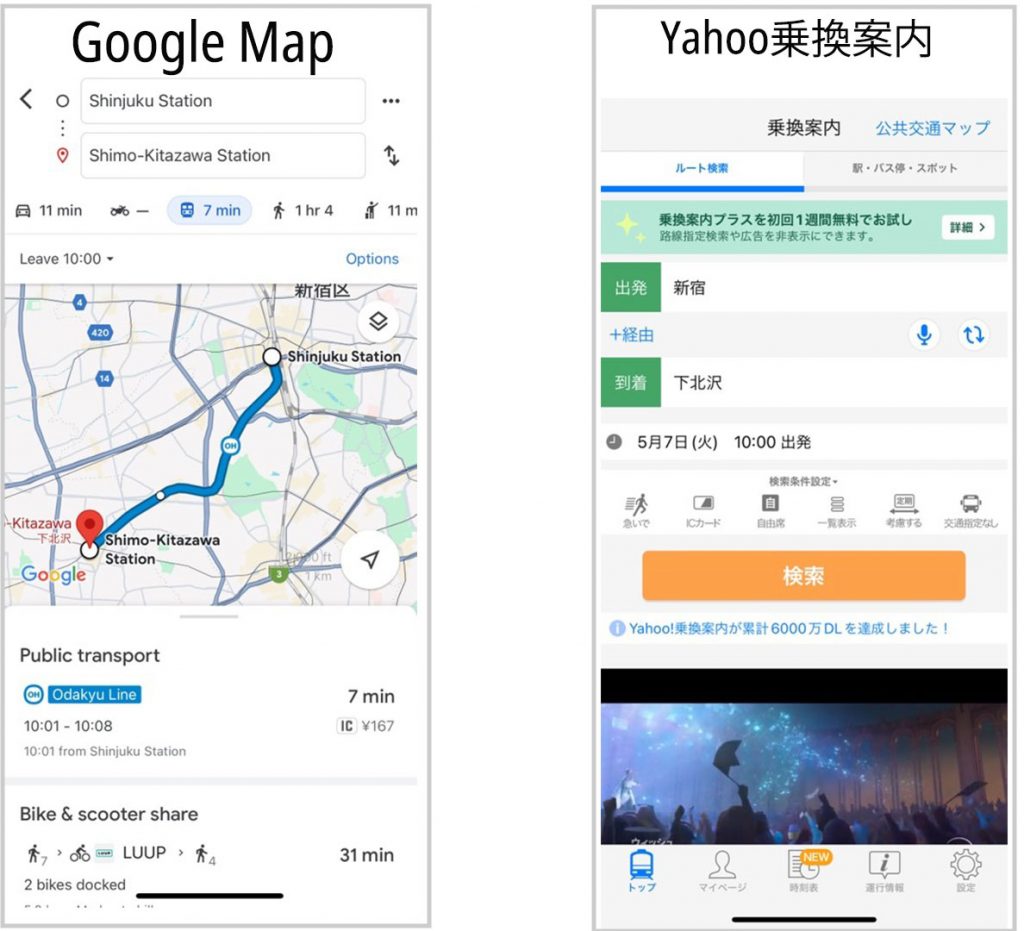
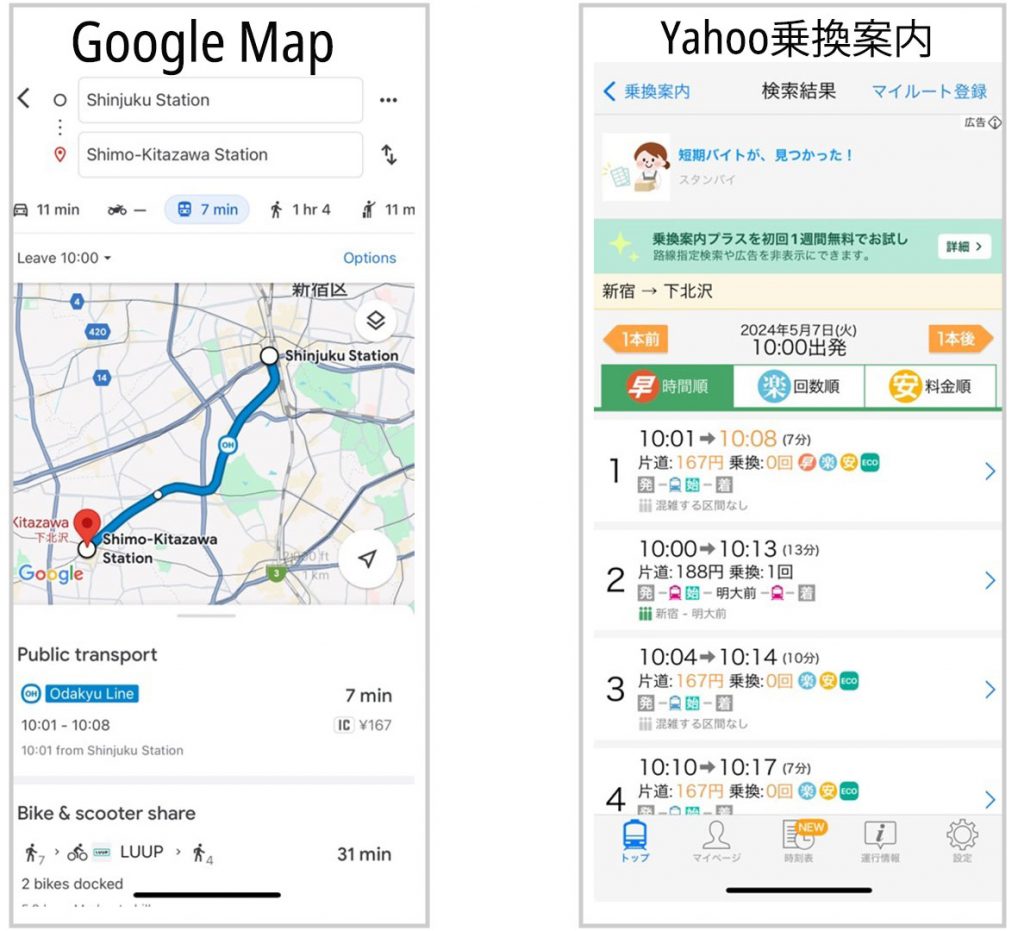

Carrying Luggage with Ease: Leveraging Accessibility Options
When planning your route, take advantage of accessibility features available on navigation apps such as Google Maps. While these features are primarily designed to assist individuals with mobility challenges, they also benefit travelers with luggage. By selecting wheelchair-accessible routes, you can prioritize stations with elevator access, ensuring a smoother journey for yourself and others with similar needs. While accessibility features can enhance your travel experience, it’s essential to be mindful of other travelers’ needs, particularly those with disabilities.
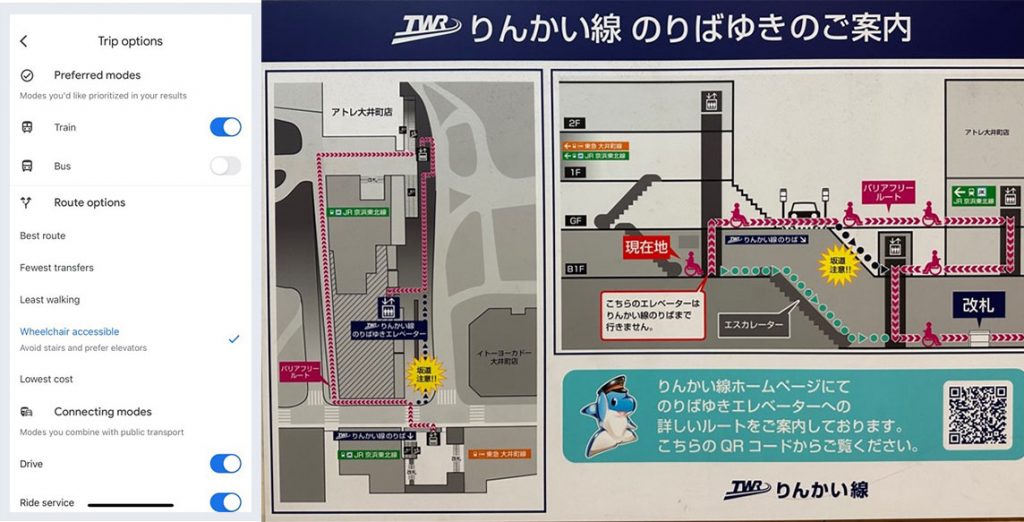
3. Purchasing a Student Commuter Pass: Your Key to Affordable Travel
If you’re commuting regularly, a student commuter pass is a smart choice, offering significant savings up to 40-50% compared to regular commuter passes. This pass provides unlimited travel on designated routes, making it both cost-effective and convenient for students.
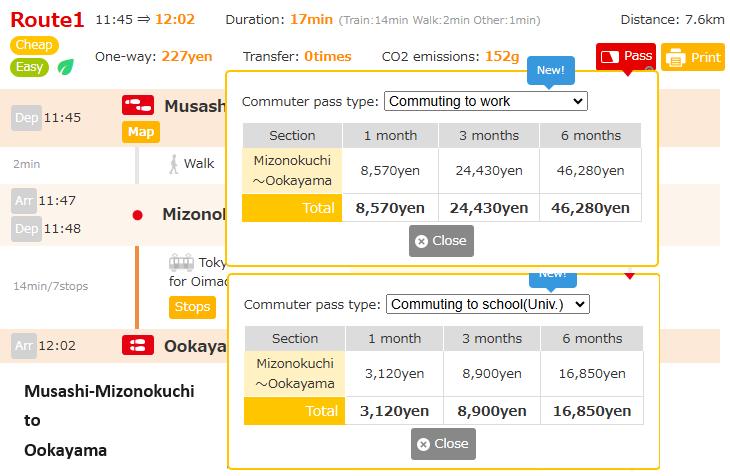
= How to Get a Student Commuter Pass =
Step One: Obtain a Student Discount Certificate
Before purchasing your pass, print a student discount certificate from the machines at Ookayama campus – Taki Plaza B1F & B2F, Suzukakedai campus – J1 Building 1F Lobby. You will need your student ID and passcode to use the machine. If you haven’t set your passcode, visit the Student Division on the first floor for assistance.
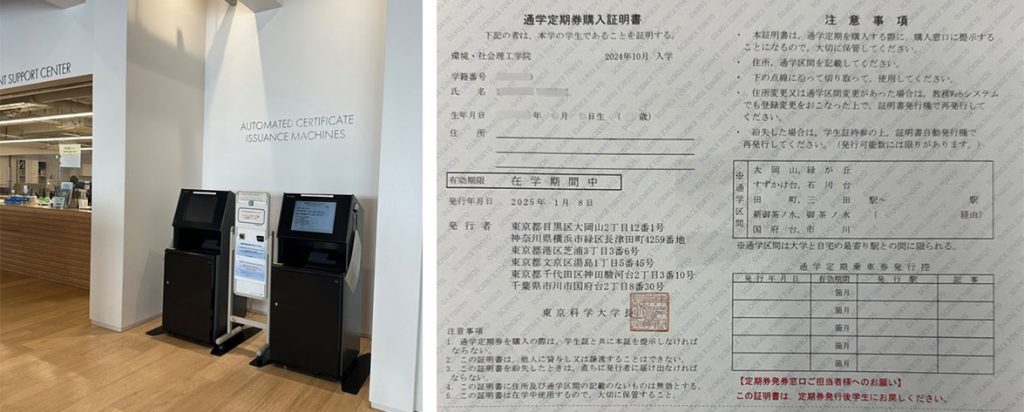
Step Two: Purchase Your Pass
- First Time Purchase: Head to the train station ticket office with your discount certificate. You cannot use the automated ticket machine for the initial purchase.
- Renewals: If it’s within the same academic year (April to March), you can renew your pass at an automated ticket machine.
- Selecting Route: You will need to select one of the three route options; Fastest, Cheapest, or Shortest.
Regular Commuter Pass vs. Student Commuter Pass
Regular Commuter Pass:
- Flexibility: Allows unlimited travel on any chosen route between two stations.
Cost: Much more expensive than the student commuter pass.- Ideal for: Non-students or those needing unrestricted travel between specific stations.
Student Commuter Pass:
- Restriction: Only valid for travel between your accommodation and university, as specified on your student discount certificate.
- Cost: Significantly cheaper (40-50% less than the regular commuter pass).
- Ideal for: Students commuting regularly between home and campus.
Tokyo’s public transportation system, though vast and initially overwhelming, becomes much easier to navigate with a bit of preparation and the right tools. Whether you are using navigation apps like Google Maps or Yahoo! Transit, learning to recognize key symbols, or choosing the right commuter pass, each step simplifies your journey.
For students, the student commuter pass is a game changer, offering significant savings and convenience for daily commutes. By planning your route carefully, whether prioritizing speed, cost, or simplicity, you can tailor your commute to suit your needs.
Embracing the challenges of Tokyo’s transport is part of the adventure. From navigating crowded trains to mastering complex stations, each experience brings you closer to feeling like a Tokyo native. With these tips in hand, you are ready to explore and thrive in one of the world’s most dynamic cities.
